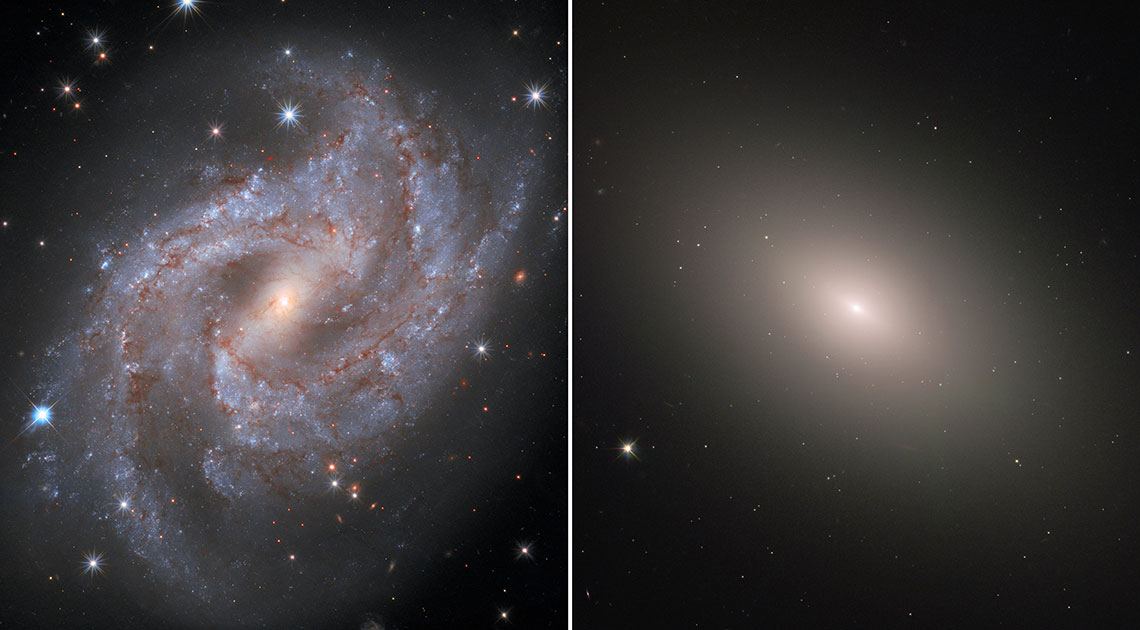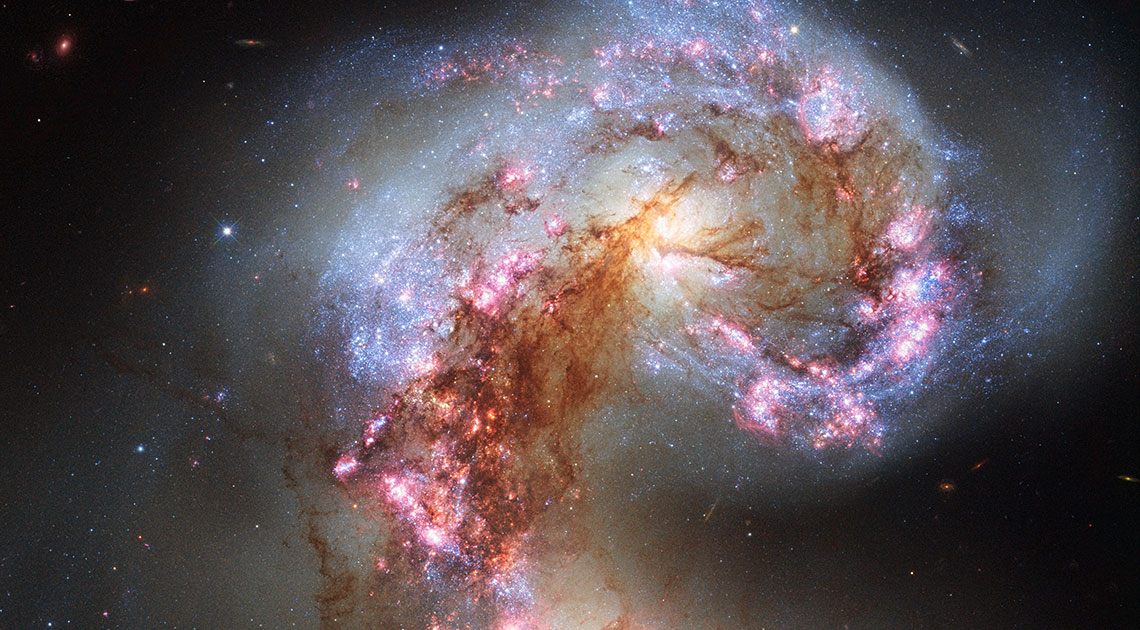An international team of astrophysicists, led by researchers from the Brazilian Center for Physics Research (CBPF), has shape-classified approximately 164,000 galaxies visible in the Southern Hemisphere skies using two homegrown artificial intelligence (AI) algorithms. The first algorithm was used to analyze the images and identify objects that could prevent categorization, such as extremely bright celestial bodies within the field of view. It also assigned each image a score based on usefulness in determining the galaxy’s shape. The second algorithm performed the classification proper, evaluating the shape of these colossal assemblages of billions of stars based on the distribution and concentration of bright dots (pixels) in the images. The study utilized galaxy data sets acquired by the Brazilian robotic telescope T80S, which has been in operation in Chile since 2016.
Roughly 98% of the galaxies were classified into one of two major categories: 69% as spirals, and 29% as ellipticals. The remaining 2% could not be classified because they either were irregularly shaped, had hybrid structures that placed them within both major categories, or did not fit within any known classification. The study’s findings are reported in a paper accepted for publication in the journal Monthly Notices of the Royal Astronomical Society. Clécio Roque de Bom, an astrophysicist at CBPF, comments: “Validation tests indicate that our AI-driven classification techniques have an accuracy rate of 98.5%.” Bom created the two algorithms used in the study and is the lead author of the paper.
The configuration of a galaxy provides clues about its history and how it was formed. The most common types are spirals, such as the Milky Way. Their central portion, called the bulge, houses a dense cluster of stars, typically older ones. From the bulge, plumes of new stars spiral off into space, fueled by the presence of cold gas. These stunning structures are informally referred to as “arms.”
Elliptical galaxies, which lack substantial amounts of gas, typically do not produce new stars and have a simpler and more uniform structure. They are round or oval in shape and primarily consist of older stars. “Elliptical galaxies are generally found in the central regions of galaxy clusters, while spiral galaxies are more commonly located on their periphery,” explains Bom.

ESA / Hubble & NASA | ESA / Hubble & NASA, P. CoteExamples of the two primary galaxy classes: the spiral NGC 2525 (on the right) and the elliptical Messier 59ESA / Hubble & NASA | ESA / Hubble & NASA, P. Cote
From manual to automated
Just a few decades ago, astrophysicists classified galaxies and other celestial bodies using a manual process, examining each image individually. But the fast-growing body of data on celestial bodies, collected in multiple sky surveys, has led to a shift to automated classification, at least as an initial, rough determination.
Advancements in computer science, and more recently in the fields of artificial intelligence and machine learning, now enable millions of images to be rapidly processed. “Thanks to these algorithms, the time it takes to classify a galaxy has been reduced to milliseconds,” says Italian astrophysicist Arianna Cortesi from the Valongo Observatory at the Federal University of Rio de Janeiro (OV-UFRJ), a coauthor of the study. “Automated classification relies on good image resolution and depth.” The algorithm can only recognize the arms and other structures of galaxies when fed with high-quality records of celestial bodies.
The T80S telescope is being operated primarily in support of the Southern Photometric Local Universe Survey (S-Plus), an ongoing survey mapping half of the Southern Hemisphere sky, including some regions not covered by other surveys. It is equipped with a relatively small, 80-centimeter mirror, but boasts a wide-field camera, making it ideal for rapidly surveying vast areas of the sky.
T80S also features a filter system that produces images of observed celestial bodies in 12 different photometric bands. “Most surveys typically provide images in four to six bands,” notes Claudia Mendes de Oliveira, an astrophysicist at the Institute of Astronomy, Geophysics, and Atmospheric Sciences at the University of São Paulo (IAG-USP), who helped develop the T80S telescope and is heading the S-Plus project. “Our images contain a wealth of information, and artificial intelligence has provided a valuable tool in our analyses.”
The S-Plus survey has cataloged and shared images of 21 million celestial objects so far. Approximately 200 researchers, with 60% of them being Brazilian, are participating in the project. The construction and operation of the T80S were primarily funded by FAPESP, with the Brazilian National Council for Scientific and Technological Development (CNPq), the Brazilian Funding Authority for Studies and Projects (FINEP), and the Rio de Janeiro State Research Foundation (FAPERJ) providing additional funding to help bring the telescope online.
Project
Science with the Brazilian robotic telescope (nº 19/26492-3); Grant Mechanism Thematic Project; Principal Investigator Claudia Mendes de Oliveira (USP); Investment R$3,899,778.96.
Scientific article
DE BOM, C. R. et al. An extended catalogue of galaxy morphology using deep learning in southern photometric local universe survey data release 3. ArXiv. june 16, 2023.


